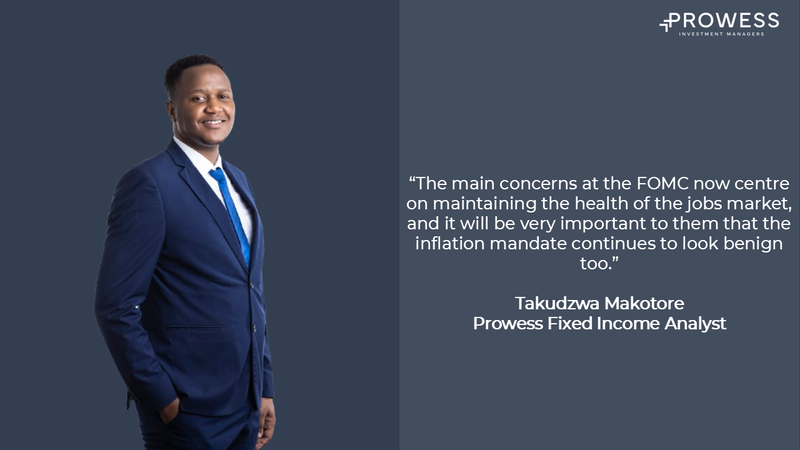Although last week’s US inflation print showed a sixth consecutive monthly decline, it still came in above market expectations, while the Federal Open Market Committee (FOMC) minutes gave investors some direction on the possible rate path going forward. Locally, the Rand experienced volatility on the back of tensions in the Middle East and the FOMC output.
International Market Developments
Last week, US inflation rate slowed for a sixth consecutive month to 2.4% in September, the lowest since February 2021, from 2.5% in August. However, the inflation print was above market expectations of 2.3%. Prices rose less for shelter (4.9% vs 5.2%) and energy costs declined more (-6.8% vs -4% in August), mainly due to gasoline (-15.3% vs -10.3%) and fuel oil (-22.4% vs -12.1%) while natural gas prices rebounded (2% vs -0.1%). Core CPI, which excludes food and energy, also came in hotter than expected, rising 0.3% from August to September. The latest monthly increase lifted the year-ago rate for core CPI from 3.2% to 3.3%. While not cause for panic, September’s CPI print is more concerning than August’s, when shelter inflation was solely to blame for the upside surprise.
The minutes of the FOMC meeting of 17-18 September, at which the Fed decided on a 50 basis point rate cut, were released. The main focus for markets looking ahead will be the future path of policy. On this, the minutes did not suggest the FOMC envisaged a 50 basis point pace of rate cuts going forward as appropriate, instead pointing to a gradual pace of rate reductions towards a more neutral policy stance ‘over time’ as the most likely path. Markets share this assessment, expecting 25 basis point rate cuts by the FOMC at every meeting between now and mid-2025. Of course, our view and that of the market and most importantly the FOMC will hinge on how economic data plays out. The main concerns at the FOMC now centre on maintaining the health of the jobs market, and it will be very important to them that the inflation mandate continues to look benign too.
Local Market Developments
The oil price moved above US$80/bbl last week (Brent crude), and above R1 400/bbl as the rand weakened as well, with the potential petrol price cut for November now eroded from over R1.00/litre to 39c/litre, as Middle East tensions worsen. International oil prices climbed on worries that Iranian oil supplies and energy facilities will come under attack, with Brent crude having seen higher prices this year, but the recent price weakness has been quite rapid in comparison. The rand remains a volatile currency, reaching R17.64/USD on the escalation in geopolitical tensions, from R17.03/USD at the end of September, with a cautious tone from the FOMC on the pace of US interest rate cuts also a factor.
Looking ahead, it is a data thin week with local retail sales for August due out on Wednesday.


